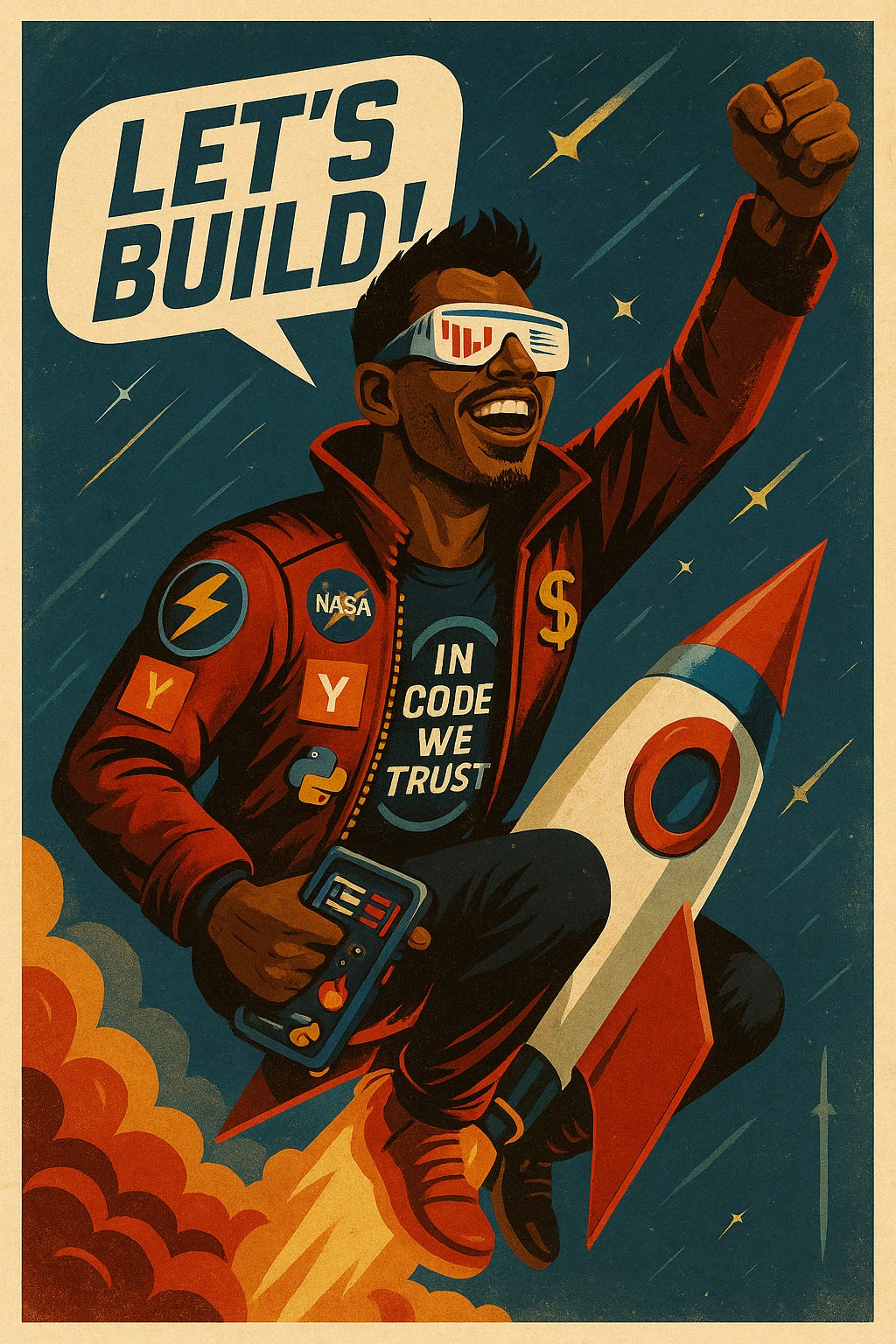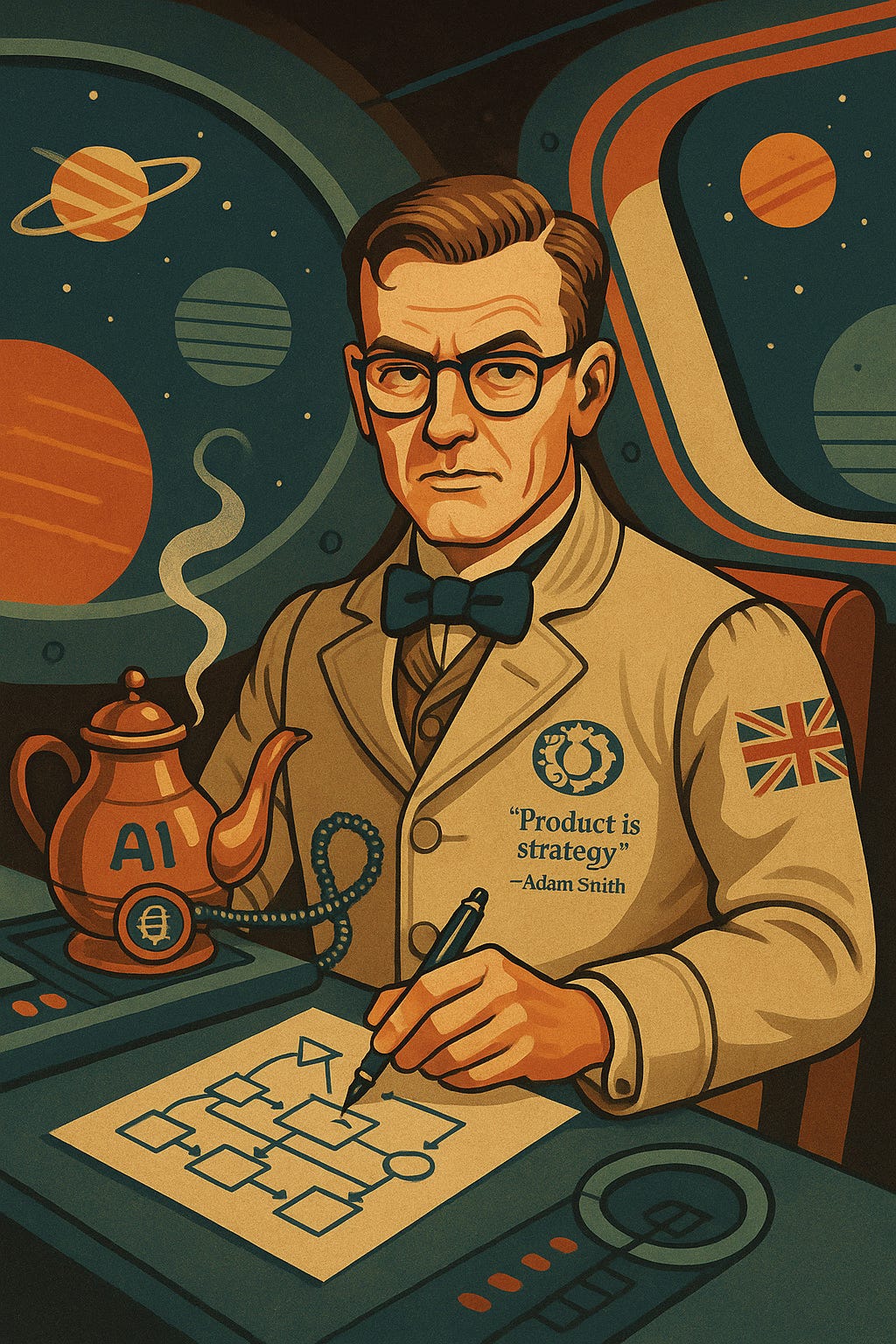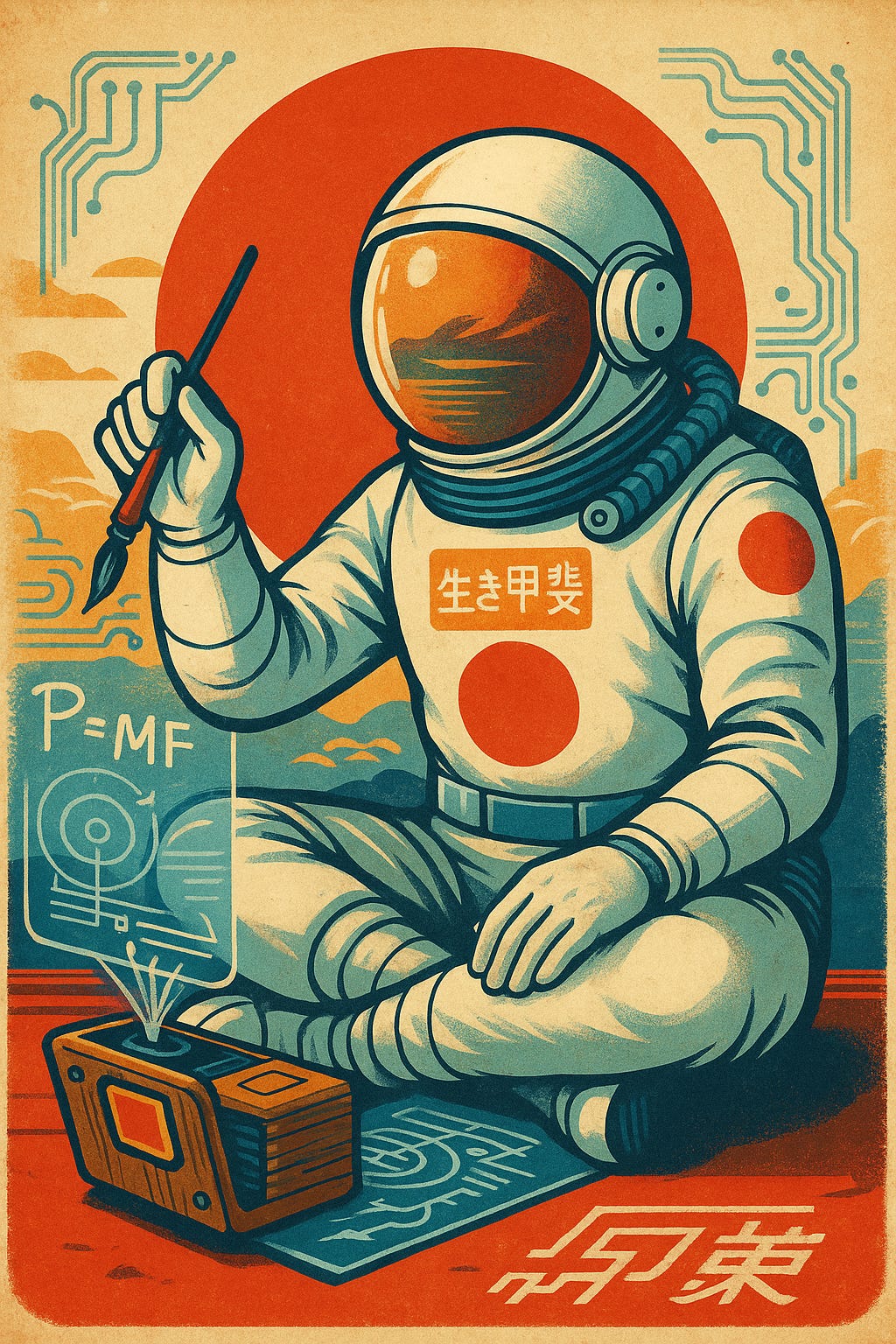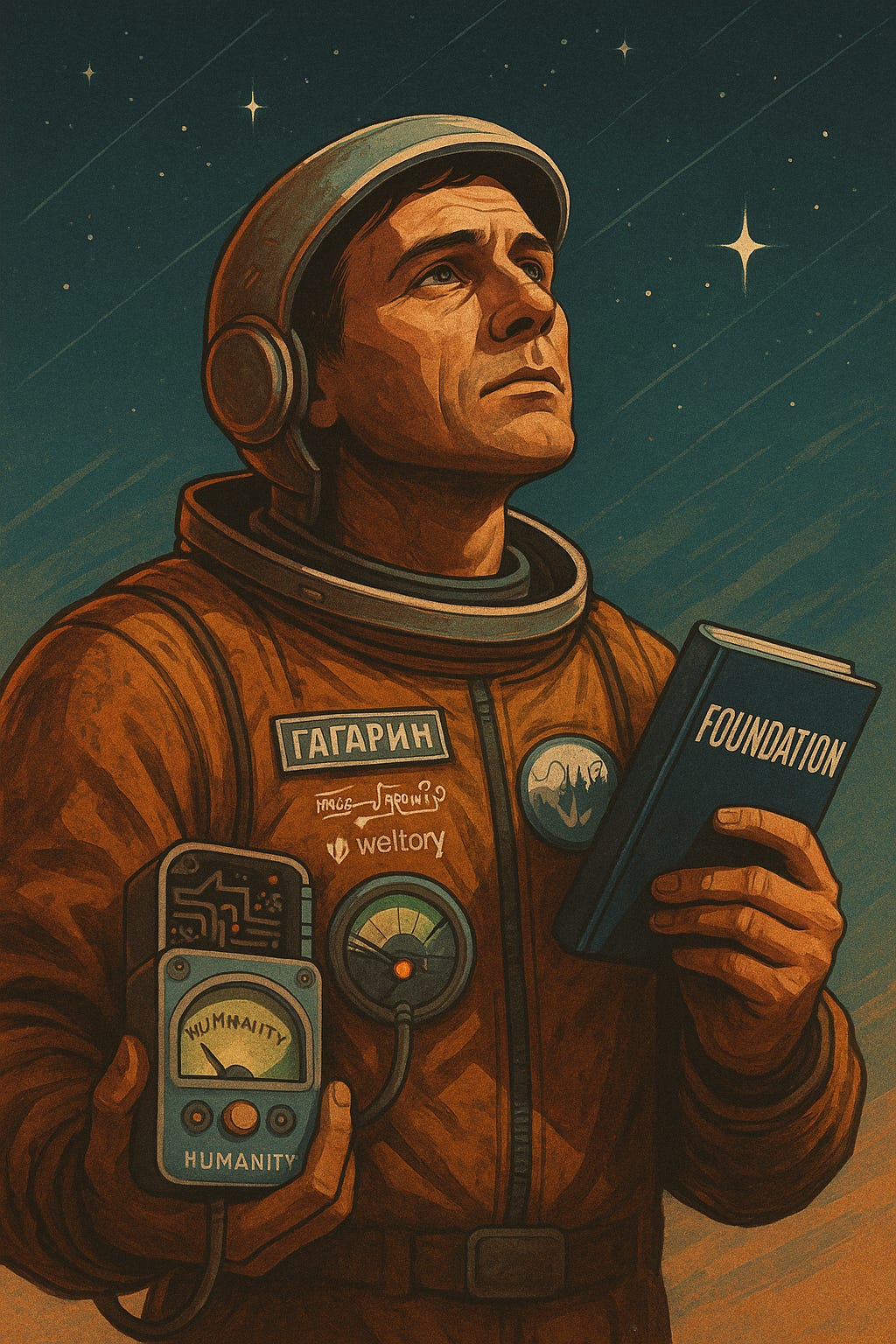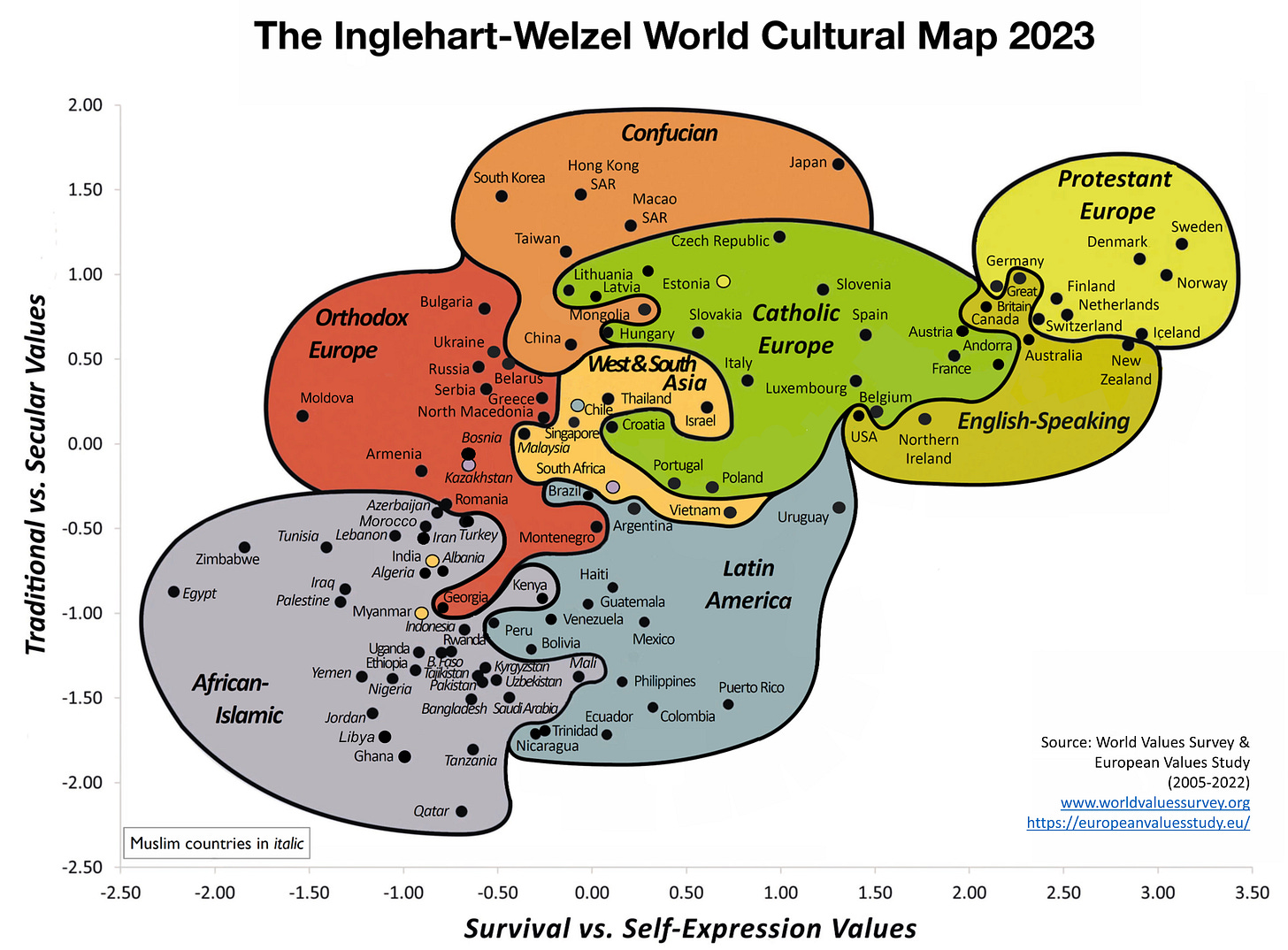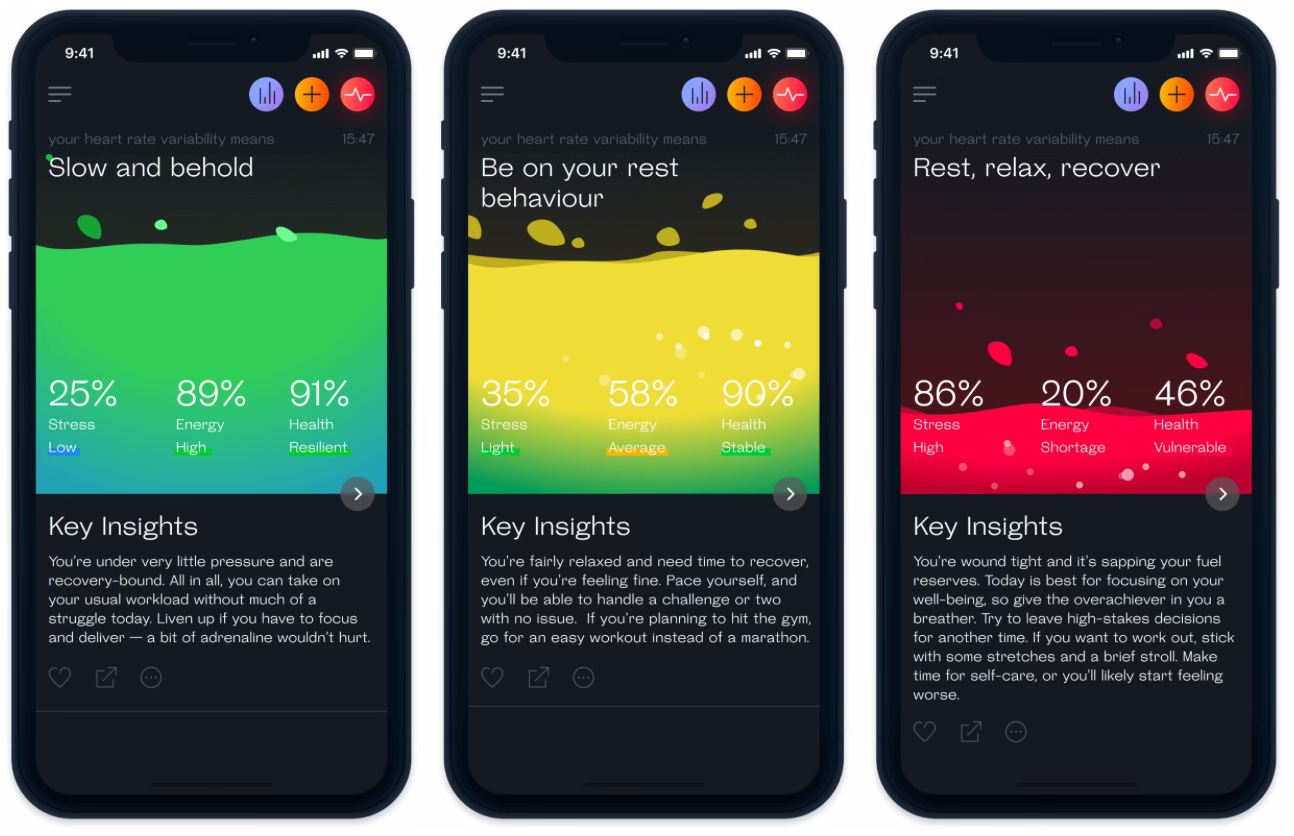How Your Cultural Code Shapes Your Startup
The Blind Spots and Superpowers
I met Roman Baevsky, the scientist who helped monitor Gagarin’s nervous system in space, when he was consulting for NASA. He was part of a quiet tradition — like Asimov’s Foundation or Carl Sagan’s Cosmos — where science wasn’t about politics or profits, but about understanding ourselves.
For many brilliant minds in the Soviet era, building systems that helped people — decoding the heart, exploring the stars — was a way to stay human in an inhuman system.
When I showed him how we’d made HRV measurable on a smartphone, he smiled and said, “That’s what we always dreamed of — we just didn’t have the tools.”
He handed me a stack of research papers — raw, brilliant, and hopeful. In his hands, heart rate variability wasn’t just a metric. It was a blueprint for preventive care that could reach everyone.
This is the cultural legacy I carry — a belief that technology should serve people, not just markets. Recently, during a team discussion on ethics, I was reminded how deeply our values shape our work. Not just individually, but through the cultures we come from. Different cultural operating systems lead to very different companies.
I want to share some of my recent reflections — maybe they’ll offer you a few unexpected insights too.
The Great Melting Pot (That Refuses to Melt)
I'll never forget my shock the first time I saw startups pitching in a Silicon Valley church. For someone born in the USSR, where entrepreneurship was seen as shameful (definitely a thief, definitely not earning eternal life), watching founders seek funding in a house of worship broke my brain. In America, wealth is practically next to godliness.
This crystallized something I'd been noticing: 60% of top US AI companies have immigrant founders. In Silicon Valley specifically? 66% of tech workers are foreign-born. Only 17% were actually born in California.
When I talk to investors now, I often feel how our ideas about the purpose of investment diverge. I'm beginning to understand why patient capital is more common in Europe, why short-termism is specific to the US mentality, why Chinese or Arab investors think in different time horizons. These aren't just quirks — they're features of different cultural operating systems.
So when VCs pattern-match on hoodies and Stanford dropouts, they're missing the plot. The real Silicon Valley is a Bengali engineer debugging code at 3 AM, a Ukrainian designer obsessing over pixels, a Brazilian growth hacker who learned English from pirated Friends episodes.
Each brings their cultural OS — invisible, powerful, and absolutely refusing to assimilate into some mythical "startup culture."
Part 1: Why Your Startup Exists (The Mission Code)
The American Code: Change the World (In 2-3 Years, Max)
Mission Template: "We're making the world more [democratized/efficient/connected] through [insert disruption]."
Americans perfected the art of believing two contradictory things: they're both saving humanity AND deserve to get obscenely rich doing it. It's Protestant work ethic meets Vegas — virtue and vice in a Delaware C-corp.
Superpower: Speed to market. Americans will pivot away from their grandmother if the metrics don't look good.
Blind spot: Assuming every human problem has a profitable solution. Hence Juicero — a $120 million WiFi-enabled machine to squeeze pre-squeezed juice packets.
The Chinese Code: The Century Game
Mission Template: "We're building civilizational infrastructure for the next 100 years."
Chinese companies play SimCity while Americans play Candy Crush. While Silicon Valley optimizes for the next funding round, 82% of recent Chinese tech funding went to semiconductors and manufacturing. Boring? Only if you think chips are less important than chips.
Superpower: Thinking in decades, not quarters. WeChat isn't an app — it's an operating system for 1.3 billion lives.
Blind spot: Sometimes the government thinks it's playing SimCity with your company too.
The Indian Code: Jugaad at Scale
Mission Template: "We're solving real problems for millions with whatever we've got."
Indian startups perfected innovation-by-constraint before it was a TED talk. Zoho bootstrapped to $1 billion because who needs VCs when you have profitability? UPI processes 10 billion transactions monthly because sometimes the best payment system is one the government builds.
Superpower: Making the impossible possible with 10% of the resources.
Blind spot: Sometimes jugaad becomes jugaad² — creative solutions to problems created by previous creative solutions.
The European Code: But Is It Ethical?
Mission Template: "We're building sustainable solutions that respect human dignity and our 35-hour work week."
Europeans read the terms and conditions. All of them. They created GDPR not to annoy you, but because they genuinely believe privacy is a human right. 21% of European startup funding goes to sustainability — double the US rate.
Superpower: Building things that last. European companies are like cast-iron pans — they take forever to heat up but work for generations.
Blind spot: By the time the 27 committees approve your product roadmap, an American competitor already IPO'd and flamed out.
The Japanese Code: The 200-Year Business Plan
Mission Template: "We're perfecting this specific aspect of human experience. See you in 2224."
Nintendo spent 83 years making playing cards before Mario. Toyota still uses manufacturing principles from the 1950s. Japanese companies don't pivot — they perfect.
Superpower: Quality that makes everything else look like a rough draft.
Blind spot: Sometimes the perfect is the enemy of the shipped.
The Israeli Code: Chutzpah as Strategy
Mission Template: "We're disrupting [industry] because someone said we couldn't."
Israel has more startups per capita than anywhere else because when you're surrounded by challenges, everything looks like a problem worth solving. The Israeli startup scene runs on productive paranoia and military-grade directness.
Superpower: Turning existential pressure into innovation fuel. Plus, nobody negotiates harder.
Blind spot: Sometimes not every conversation needs to be a negotiation at DEFCON.
The Soviet/Post-Soviet Code: Engineering as Humanism
Mission Template: "We're solving fundamental human problems through superior engineering for the future."
This worldview — engineering humanism — ran deep through Soviet futurism. It wasn't about profits or IPOs. It was about building a better world through collective progress and scientific achievement. The sci-fi of Strugatsky brothers didn't imagine billionaires in space — it imagined scientists as caretakers of humanity (Asimov, The Foundation, S.T.A.L.K.E.R, Atomic hearts).
Superpower: Building complex, powerful systems that actually help people. Products like Telegram (900M users, still barely monetized), JetBrains (20 years perfecting developer tools), or Miro (collaborative complexity made simple).
Blind spot: Chronic undermonetization. When profit feels like theft, it's hard to charge what you're worth.
Part 2: How Culture Shapes Your Product. The Unexpected Way
Plot Twist #1: Craigslist — The Anti-Silicon Valley Unicorn
While every American startup chases growth, Craigslist sits there like a digital middle finger to capitalism. $694 million in revenue. Same UI since 1996. Zero investors. 50 employees.
Craig Newmark looked at venture capital and said "nah, I'm good." In peak America, that's the most un-American thing ever. And it worked.
Plot Twist #2: Telegram's Monk
Pavel Durov has 900 million users and only recently started monetizing after years of running on his personal savings. Even now, Telegram's monetization feels reluctant — like a monk forced to charge temple visitors.
It's not bad business — it's post-Soviet engineering philosophy: "We built something important. Money is secondary. Also, we trust no one, especially people with money."
I recognize this pattern painfully well. At Welltory, we started with a price 10x lower than what actually worked — we only discovered optimal pricing through obsessive A/B testing, not intuition. If we hadn't been nerdy enough to test everything, we'd still be undercharging.
But here's what we never debated: principles like "never charge for critical health warnings" (if someone needs to see a doctor, that message is always free) and "never monetize fear or guilt." These weren't business decisions — they were moral reflexes. In the USSR, making profit meant you were stealing from someone, and that programming runs deep.
Plot Twist #3: Korean Chaebols — When One Company Makes Everything
Samsung makes phones, ships, life insurance, and apartments. In America, that's antitrust violation. In Korea, it's Tuesday.
Korean chaebols emerged from post-war scarcity — when you have nothing, you build everything. Now Samsung's revenue is 20% of South Korea's GDP. That's not a company; that's a parallel government with better R&D.
Plot Twist #4: M-Pesa — When Kenya Out-Innovated Silicon Valley
While Americans were debating NFC vs QR codes, Kenya launched M-Pesa in 2007 — a mobile payment system using... text messages. On feature phones. No apps needed.
Today it processes 51% of Kenya's GDP. It succeeded because it solved a real problem (no banks in rural areas) with available technology (everyone had a basic phone). Silicon Valley would have added blockchain and killed it.
Part 3: The Money Question (Show Me the Incentives)
[More about cultural map 2024]
Americans: Money = Morality
In Silicon Valley, your valuation is your validation. Raised $100M? You're a visionary. Bootstrapped? That's... quaint. Like bringing a casserole to a cocaine party.
Americans turned capitalism into a religion where IPO is the rapture. They'll absolutely torch a profitable business for growth metrics because that's what the scripture (pitch deck) demands.
Europeans: Money = Necessary Evil
Europeans treat money like Americans treat healthcare — necessary but somehow embarrassing to discuss. A German startup will spend two years ensuring their cap table is philosophically coherent while their American competitor has already burned through three pivots and two marriages.
Chinese: Money = National Power
Chinese startups optimize for scale because when you have 1.4 billion people, everything else is a rounding error. They'll lose money for a decade if it means dominating a strategic sector. It's capitalism with Chinese characteristics — which is just central planning with better PR.
Middle Eastern: Money = Trust and Community Benefit
Islamic business ethics fundamentally shape Middle Eastern startups. The Quranic principle "Do not eat from each other's wealth by false means" creates a framework where:
No riba (interest): Islamic VCs use profit-sharing (mudarabah) where investors only win when founders win
No gharar (excessive uncertainty): Terms must be transparent, no exploitative fine print
Halal business only: Investments flow to businesses creating positive value
This isn't just religious compliance — it's a different philosophy. Where Silicon Valley VCs might demand aggressive terms and guaranteed exits, Islamic finance requires shared risk. Family businesses form 75% of the private sector because trust and long-term relationships matter more than quick exits. The result? More patient capital, but also more conservative growth.
African: Money = Community Transformation
African startups don't just talk about impact — they live it. Every successful startup enables ten more. It's ecosystem building by necessity. When Flutterwave processes payments, they're not just moving money — they're building financial infrastructure for a continent.
Part 4: The Plot Twist Nobody Tells You
Here's the thing about cultural weaknesses: once you're aware of them, they can become your secret weapon. You don't need to hire someone from a different culture to compensate. Sometimes, the tension between your strength and your weakness creates the most innovative solutions.
At Welltory, our love of complexity initially created products with 100+ health metrics that overwhelmed users. Classic engineer thinking: more data = better product. Ha.
But instead of hiring American product managers to dumb things down, we leaned into the tension. We kept the complexity but hid it behind what we call "magical visualizations." When we showed nervous system state as a boiling liquid, growth jumped 169% annually. When we visualized burned calories as jiggling fat blobs, screenshot shares doubled.
Our cultural "weakness" (obsession with scientific accuracy) forced us to innovate harder on simplicity than companies who started simple. Now every feature has two faces: a super-complex academic report full of science, and a beautiful visual metaphor that lets users understand everything in a second.
This same pattern shows up everywhere:
Our post-Soviet survival instinct made us control every dollar. We know the efficiency of every creative, any copywriter can analyze A/B tests, we don't have a team of analysts because practically everyone in the company can do it. What looks like paranoia to American VCs is actually antifragility.
Our comfort with complexity meant we just taught our physiologist scientists to code so they could talk to data scientists easier. Where others see impossibility, we see Tuesday.
Our mission-driven culture helped us survive the Silicon Valley Bank collapse through pure trust and shared purpose, while other startups panicked.
But we also discovered our blind spots the hard way. I recently fed our investment memorandum to an AI, and it told me we were "too logical" — that our facts and arguments made us seem "unambitious" and "lacking confidence to dominate the market." I was shocked that being logical and well-reasoned could be seen as a minus. But that's exactly the kind of thing you need to understand instead of banging your head against the wall.
Spotify succeeded because Daniel Ek brought Swedish consensus-building to music licensing — turning enemies into partners instead of disrupting them to death.
Zoom won because Eric Yuan, after being rejected for a US visa eight times, understood the pain of distance. A very specific, very non-Silicon Valley pain.
Canva conquered design because Melanie Perkins, from Perth, Australia, didn't know she was supposed to be intimidated by Adobe. Geographic isolation became fresh perspective.
Your cultural code shapes three critical things:
What problems you see (that others miss)
How you solve them (your unique approach)
Why you keep going (when logic says stop)
The magic happens when codes collide:
Soviet mathematical thinking + British financial systems = Revolut
Israeli military precision + California dreaming = Waze, etc.
The Real Secret: Every Strength Is Also a Weakness
Americans suffer from chronic short-termism — they'll build 1,000 AI wrappers around ChatGPT, and 990 will die within a year. But that speed means they'll test more ideas in a month than others debate in a year, and the 10 that survive might change everything.
Europeans build companies like cathedrals — beautiful, lasting, and sometimes obsolete before completion. But when they work, they define categories for generations.
Asians think so long-term they might miss the current opportunity. But they build empires while others build features.
Africans innovate by necessity with constraints others can't imagine. But sometimes those constraints become self-fulfilling prophecies.
Latin Americans build with passion and community at the core. But sometimes the party mindset extends to board meetings.
Your Cultural Code Is Your Moat
We're still learning to compensate for our limitations — like how to sell ourselves or articulate our value in Silicon Valley language. But our users and product help us. Because ultimately, we work for them and they value us.
Recently I discovered that 50% of our CRM revenue comes from lifetime subscriptions. People literally decide they want our product forever. It means a lot for us.
Here's the Goldratt-style truth: Your cultural strengths will manifest anyway — they're your default mode. But your blind spots? That's where the magic happens. When you consciously engage with what your culture undervalues, you create tension. And tension, properly channeled, creates innovation.
The formula is simple:
Identify your cultural blind spot (what your culture dismisses or undervalues)
Apply extreme creativity to that specific weakness
Never compromise your core strengths — use them to solve the weakness
The resulting tension creates your unique solution
Our "magical visualizations" exist because Soviet complexity (strength) + American simplicity obsession (weakness we had to learn) = innovation nobody else would create.
Don't debug your cultural code. Deploy it strategically.
Your accent — cultural, linguistic, or philosophical — isn't a bug. It's your unfair advantage. The hard part is having the discipline to focus on what your culture taught you to ignore.
Disclaimer: All founder illustrations were generated by ChatGPT based on cultural archetypes. Blame the machine, not me — I just supplied the prompt and the existential dread.
Relevant Reading
"Cultures and Organizations: Software of the Mind" by Geert Hofstede – The foundational text on how national cultures influence work
"The Culture Map" by Erin Meyer – Navigate your blind spots when working across cultures
"From Newspeak to Cyberspeak" by Slava Gerovitch – How Soviet scientists invented their own language to survive
"Science and Philosophy in the Soviet Union" by Loren Graham – The worldview that created Soviet tech
"Cultural Strategy" by Douglas Holt – Why some brands transcend cultures while others crash
"When Cultures Collide" by Richard Lewis – A practical guide to 100+ cultural communication styles
"The Lean Startup" by Eric Ries – The American approach to innovation (for contrast)
Inglehart-Welzel Cultural Map – Visual framework showing how cultures differ on traditional/secular and survival/self-expression values


